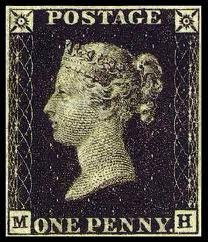n
n
n
n
n Postage used to be paid according to how many sheets of paper were transported, and how far—but it was paid on delivery. That means whoever received a letter had to pay to get that letter! What do you want to bet that there was no “junk mail” then?!
Postage used to be paid according to how many sheets of paper were transported, and how far—but it was paid on delivery. That means whoever received a letter had to pay to get that letter! What do you want to bet that there was no “junk mail” then?!
 Postage used to be paid according to how many sheets of paper were transported, and how far—but it was paid on delivery. That means whoever received a letter had to pay to get that letter! What do you want to bet that there was no “junk mail” then?!
Postage used to be paid according to how many sheets of paper were transported, and how far—but it was paid on delivery. That means whoever received a letter had to pay to get that letter! What do you want to bet that there was no “junk mail” then?!n
n
n
nFor years, pre-paid systems of postal delivery were suggested—and one may have even been tried, somewhere—but Britain is credited with starting up the first pre-paid system in the mid 1800s. Sir Rowland Hill and Henry Cole tried to figure out the best way to pre-pay letters and ran a competition, and they eventually hired an artist to create a design featuring the profile of Queen Victoria, which they printed onto adhesive stamps.
n
n
n
nThe result was the Penny Black, so called because the stamps were printed with black ink on pale paper, and because they cost a penny each. Postmasters began to sell the stamps starting on May 1, 1840, but the official date that the stamps were issued is May 6.
n
n
n
n
nThe stamps were cancelled with red ink, but it turned out that the ink didn’t show up very well on the mostly-black stamp and was, in any case, fairly easy to remove. So people could rub off the cancellation and re-use a stamp that had been already been used! After just one year, Britain switched to a stamp called the Penny Red, which was the same design printed in red. These stamps were canceled with black ink—which was much more visible and almost impossible to remove.
n
n
n
n
nBy the way, nowadays stamp collectors find a Penny Black way more valuable than a penny! A used Penny Black stamp in good condition is worth more than 100 British pounds (or a couple hundred U.S. dollars)!
n
n
n
n
n
nTo learn more about stamp collecting, check out this earlier post.
n
n
n
n




















